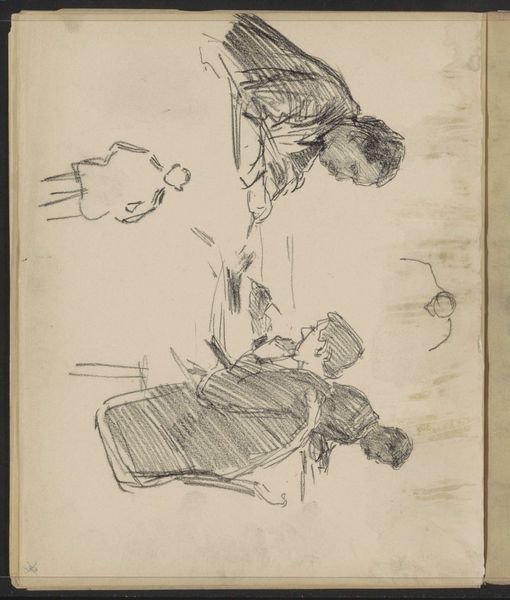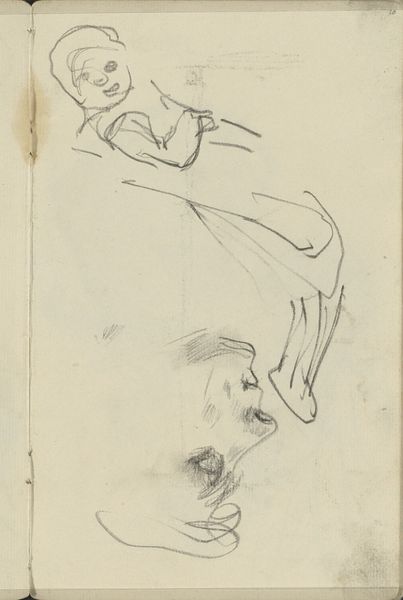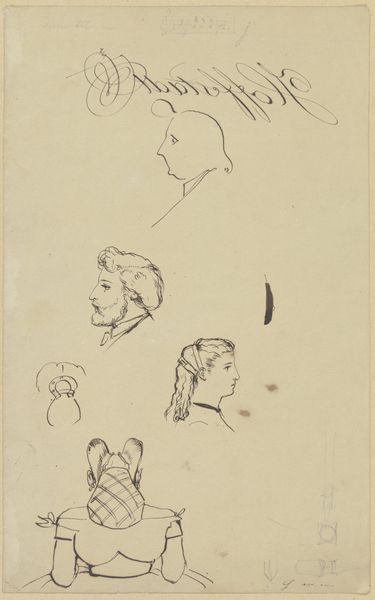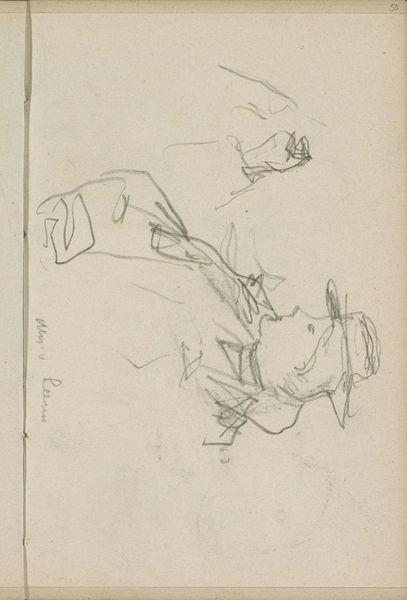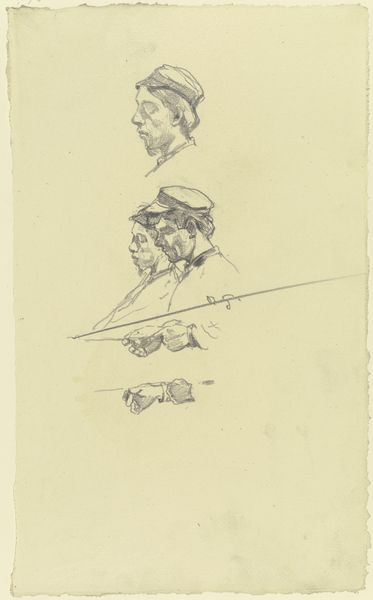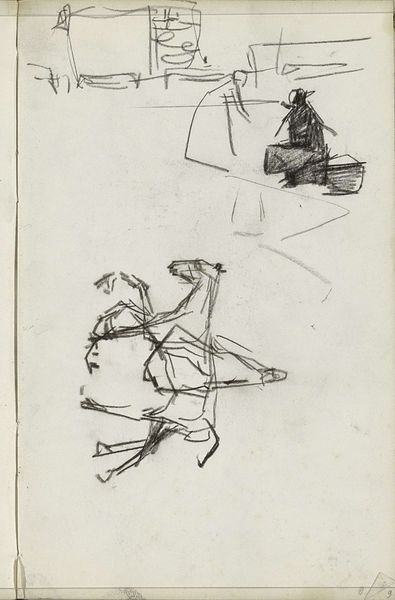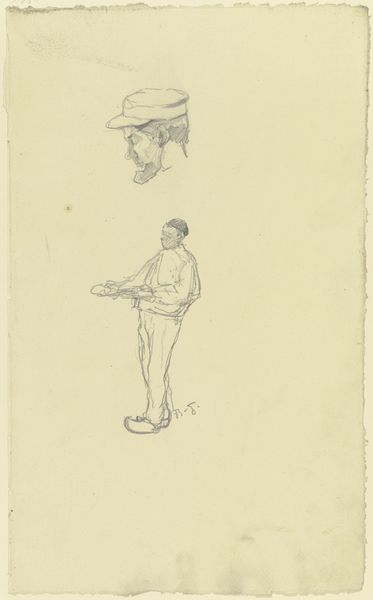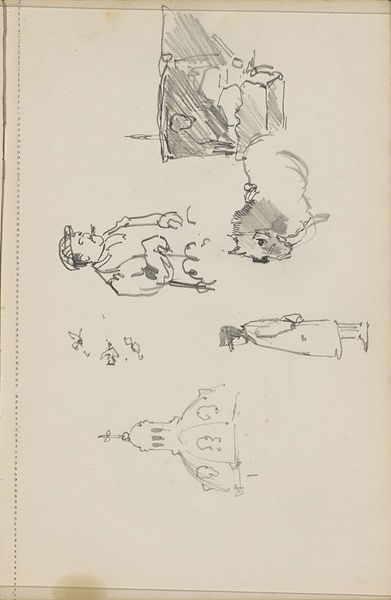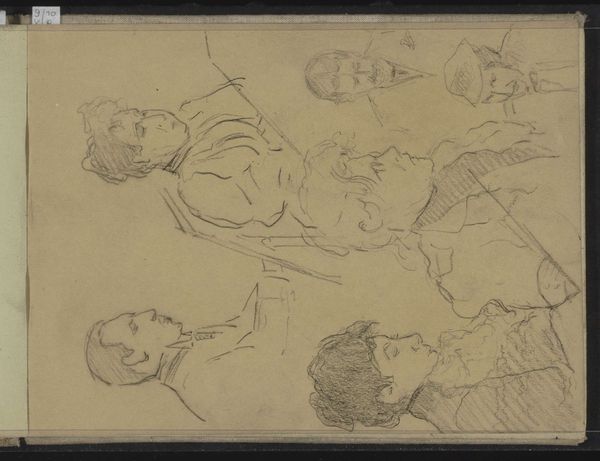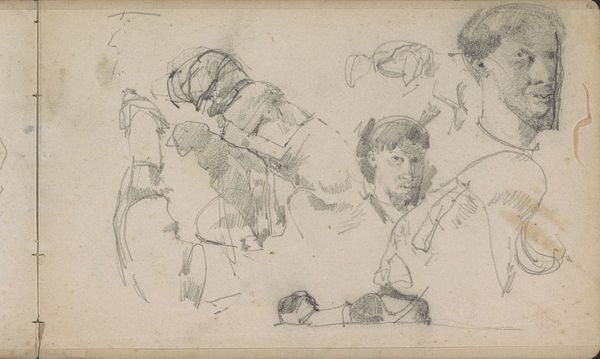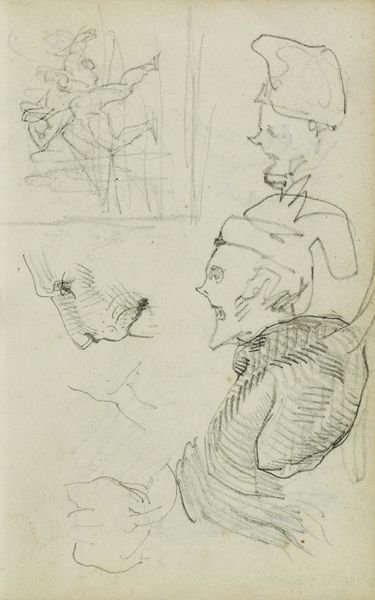
Kopf und Hände eines Arbeiters aus der _Großen Spinnerei von Edam_ c. 1894
0:00
0:00
drawing, pencil
#
portrait
#
drawing
#
pencil
#
realism
Copyright: Public Domain
Editor: We’re looking at Rudolf Gudden’s “Head and Hands of a Worker from the Great Edam Spinning Mill,” a pencil drawing from around 1894. It strikes me as quite fragmented, almost like a study sheet. What do you see in its composition? Curator: Indeed. Observe the repetition of form: the cap, the set of the jaw, the angle of the hands. Gudden isolates these elements. He's exploring the visual language of labor through these recurring motifs. What effect do these iterations create? Editor: It feels analytical, like he's breaking down the act of labor into smaller, repeatable units. Is that accurate? Curator: Precisely. Note also the stark contrast between the defined, almost sculptural rendering of the hands, compared to the lighter, sketchier rendering of the faces. This contrast could highlight the physical demands of work versus the worker's identity. Editor: That makes sense. I hadn’t noticed that difference in texture before. It seems like the hands have more detail, even though they’re also presented multiple times. Is there some meaning in that repetition and texture? Curator: We might interpret that, yes, as Gudden’s conscious arrangement. The texture is created by a tight use of hatching. The repetition in realism emphasizes those structural components of the body. By separating, but iterating, he showcases form and the action of labour, but less so identity. Editor: I see. It’s like the artwork is isolating aspects and asking the viewer to consider them outside of any one interpretation. Thanks. Curator: A pleasure. Focusing on the visual arrangement reveals complex ideas without resorting to the purely representational.
Comments
No comments
Be the first to comment and join the conversation on the ultimate creative platform.

